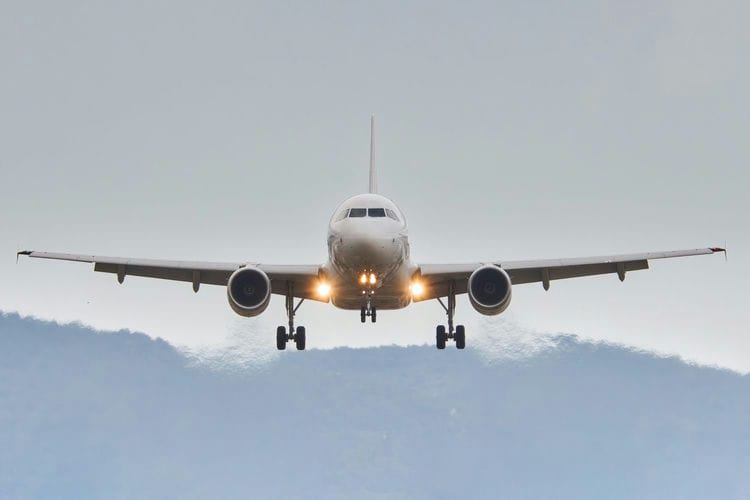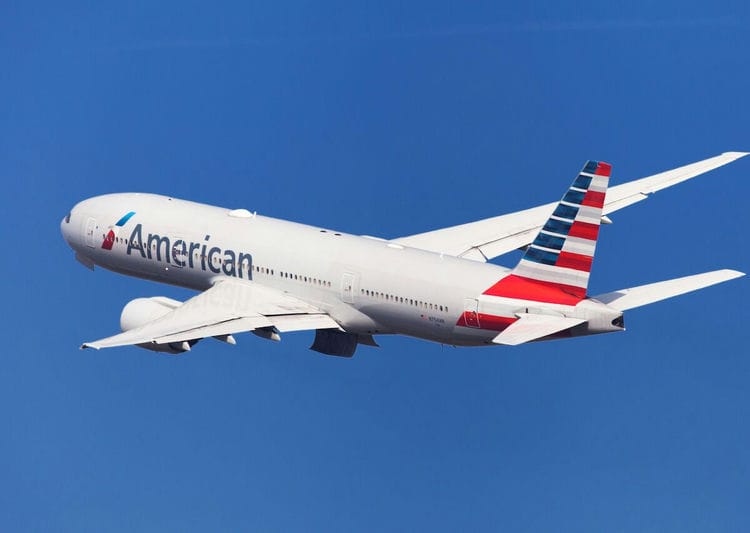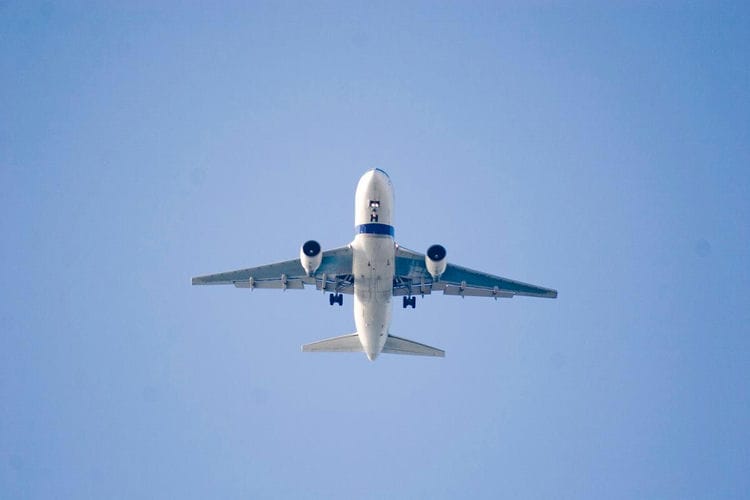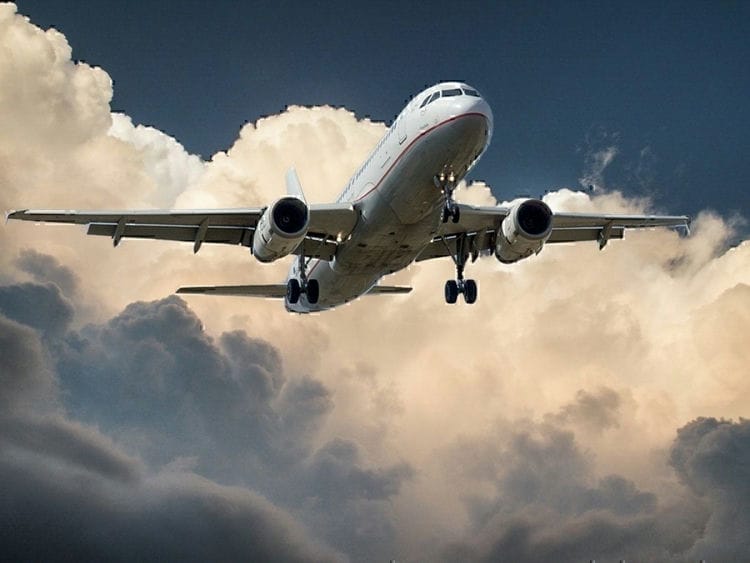FASHION & LIFESTYLE NEWS
Why Airplanes Are White: Uncovering the Practical Reasons Behind the Color Choice
Airplanes are iconic machines that capture the imagination with their ability to soar through the skies, connecting people across the globe. You may wonder why airplanes are white when other colors could make them stand out. Let’s explore the practical reasons behind this color choice and understand why it has become the industry standard with AlibayTrendy Store now
Why Airplanes Are White?
A primary reason airplanes are painted white is that white reflects heat. Given the high altitudes at which airplanes fly, they are exposed to intense sunlight for prolonged periods. This exposure occurs whether they’re flying above the clouds, cruising through sunny skies, or sitting on the tarmac waiting for takeoff or unloading passengers.

In all these scenarios, the aircraft’s surface absorbs heat from the sun. A darker-colored airplane would absorb more of this heat, leading to increased cabin temperatures, which can make the interior uncomfortable for passengers and require more energy to cool.
The additional heat can also impact the aircraft’s critical components, like its electronics and internal systems. By painting airplanes white, airlines can significantly reduce the amount of heat absorbed, keeping the aircraft cooler.
This reduction in heat absorption helps to minimize the workload on the air conditioning system, thereby lowering energy consumption and reducing wear and tear on the equipment. As a result, white-painted airplanes are more efficient in maintaining a comfortable cabin temperature, which contributes to a more pleasant travel experience for passengers.
Cost-Effectiveness and Maintenance
Another significant reason airlines opt for white airplanes is cost-effectiveness. White paint tends to be less expensive than other colors, which makes it a practical choice for airlines operating on tight budgets.

Since commercial airlines own large fleets of aircraft, the cost of paint can add up quickly, especially when multiple aircraft require repainting over time. Choosing white not only helps save on initial painting costs but also simplifies the process of maintenance and repair.
White paint is easier to maintain because it provides a consistent base color that doesn’t fade as quickly as darker or more vibrant hues. When an airplane needs repairs or repainting, matching a unique color can be time-consuming and costly. White simplifies this process, allowing for quicker and more efficient maintenance. This simplicity contributes to faster turnaround times when repairing an aircraft, enabling airlines to minimize downtime and keep their fleets in operation.
Additionally, the longevity of white paint contributes to its cost-effectiveness. It is less prone to fading and discoloration, ensuring the aircraft maintains a fresh appearance for longer. This longevity reduces the need for frequent repainting, allowing airlines to invest their resources in other critical areas of operation. Ultimately, the cost savings from reduced maintenance and fewer repainting cycles contribute to a more efficient and cost-effective airline industry.
Improved Visibility and Safety
White airplanes offer significantly better visibility, which is a critical factor when it comes to safety. The reflective nature of white paint makes it stand out against various backgrounds, whether on land or in the air.

This visibility is crucial in situations where an aircraft needs to be located quickly, such as in emergency scenarios. In the unfortunate event of an accident, a white airplane is easier to spot against different terrains, whether it’s floating on water, laying in a dense forest, or resting on a snowy landscape.
The enhanced visibility of white aircraft can be vital for search and rescue operations. Rescue teams often rely on aerial surveys to locate missing or downed aircraft, and a white airplane can be more readily identified from a distance.
This can significantly reduce the time it takes to find an aircraft and improve the chances of rescuing passengers and crew members. In emergencies, every minute counts, and the high visibility provided by a white airplane can play a key role in saving lives.
Easier Detection of Damage
Airplanes undergo stringent regular inspections to ensure they’re safe to fly. The safety of passengers and crew depends on the meticulous maintenance of aircraft. White paint makes it significantly easier to detect damage such as cracks, dents, or oil leaks. Since these inspections are critical to flight safety, a paint color that helps maintenance crews quickly identify potential issues is invaluable.

If a plane were painted in a darker color or a complex pattern, these issues could go unnoticed, potentially leading to hazardous situations. White paint provides a high-contrast backdrop against which even the smallest imperfections can be detected. This visibility allows maintenance crews to spot problems before they become serious, contributing to safer flights for everyone on board.
Additionally, the high visibility of white paint helps ground crews quickly identify any oil leaks or fuel spills, allowing them to take immediate action to prevent environmental damage and ensure the aircraft’s safe operation. Overall, the ease of damage detection provided by white paint contributes to the safe and efficient operation of aircraft in the commercial aviation industry.
Brand Adaptability
Airlines often use colorful branding and logos to set themselves apart in the competitive aviation industry, where first impressions are key to attracting and retaining passengers. A consistent branding strategy helps to establish a recognizable identity and build a loyal customer base.

However, the design and branding of an airplane can be complex, especially when considering repainting costs and the frequency with which branding may need to be updated. This is where the white base of airplanes becomes advantageous, offering a clean canvas for customization.
The white base serves as a neutral backdrop, providing a perfect surface for applying decals, logos, or other branding elements. Airlines can design unique liveries that incorporate their branding colors and logos without the need for a complete repaint.
This flexibility is especially valuable for airlines with large fleets or those undergoing rebranding. The adaptability of a white base allows airlines to keep their aircraft looking fresh and contemporary without the high costs associated with a total repaint.
Furthermore, airlines frequently update their branding to reflect new partnerships, promotions, or seasonal themes. A white base gives airlines greater flexibility in terms of design changes, enabling them to experiment with different styles and campaigns without committing to a permanent repaint.
This adaptability is crucial in an industry where visual identity plays a significant role in marketing and customer loyalty. It allows airlines to keep their fleets looking modern and engaging, ensuring that their branding resonates with passengers while minimizing repainting costs and downtime for the aircraft.
In conclusion, the choice to paint airplanes white is rooted in practical considerations that benefit both the airlines and their passengers. From reflecting heat and improving safety to reducing maintenance costs, white is the optimal color for aircraft. As you consider these factors, it’s clear that the simple white exterior hides a lot of engineering wisdom.
If you’re a fan of aviation or just love stylish and unique clothing, why not show your enthusiasm with an Airplane Hawaiian Shirt from AlibayTrendy Store? These shirts combine vibrant designs with the elegance of aviation, allowing you to express your love for flying in a trendy way. Visit AlibayTrendy Store today and elevate your wardrobe with an Airplane Hawaiian Shirt. Fly high in style!
